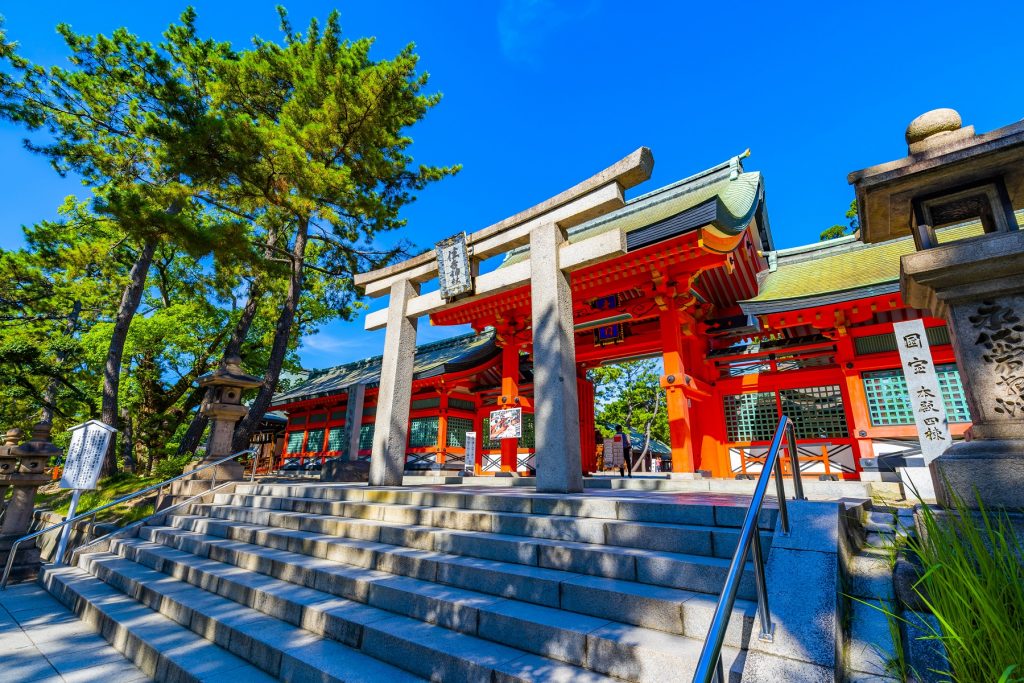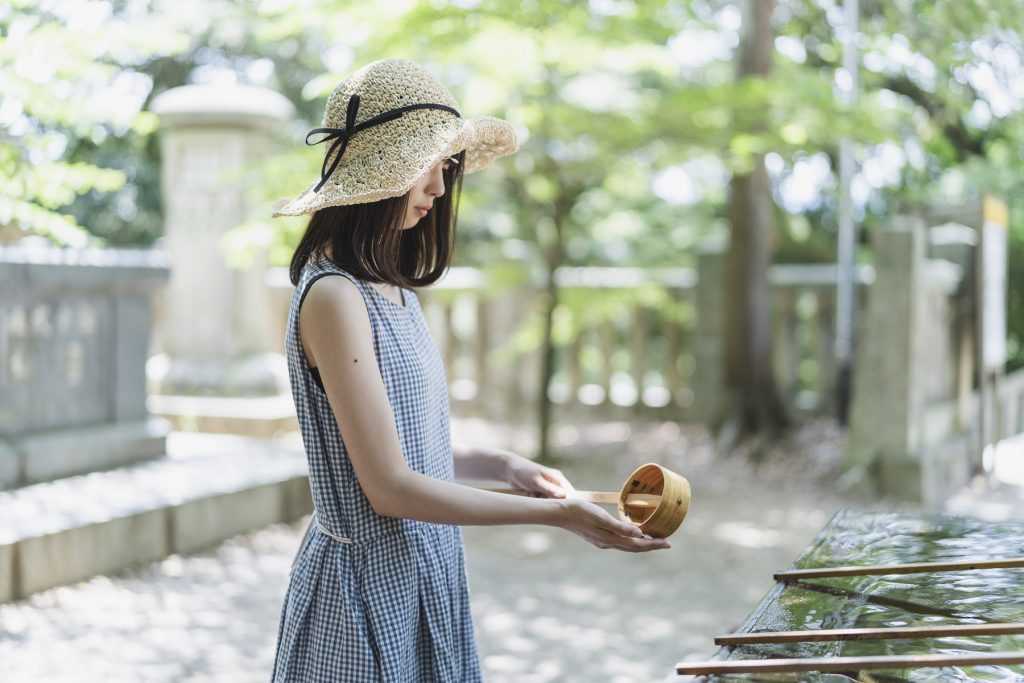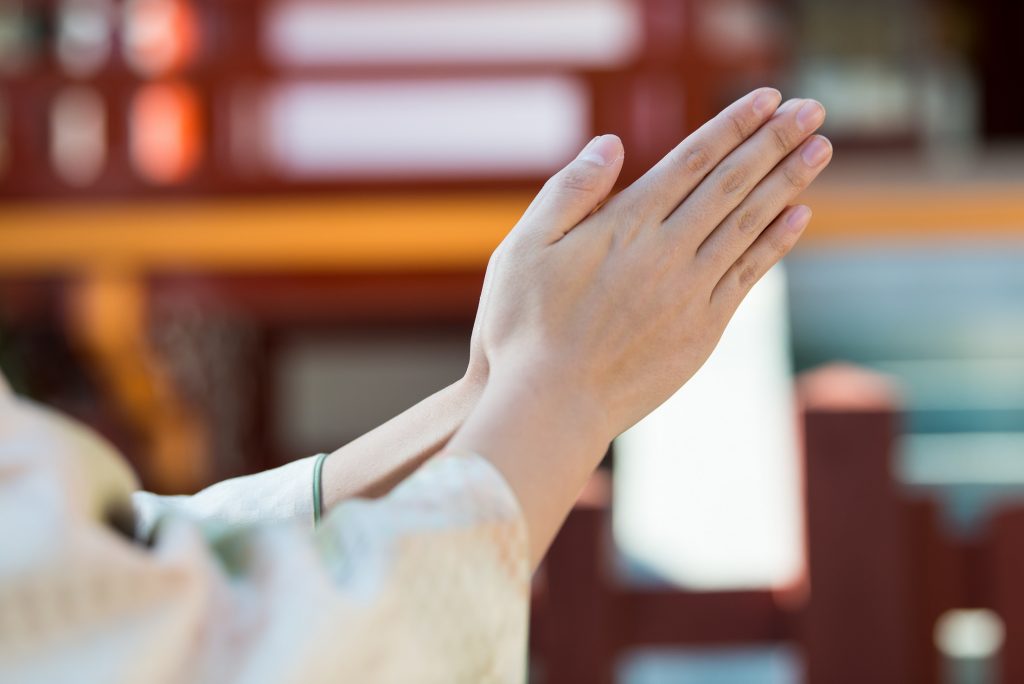
Praying at the temples and shrines in Japan is largely out of tradition rather than a full-blown belief in the tenets of each religion; Japan is a nation of traditionalists rather than believers in the church-going sense. Today there are about 160,000 shrines and temples throughout Japan. Shrines are associated with Shintoism; temples with Buddhism.
Shinto is indigenous to Japan. A polytheistic religion, believers hold that gods or spirits (kami) are all around us, existing in the same world and interacting with, and residing in, natural objects and places. Such is the freedom of the religion that you can buy a kamidana—a small shrine for the home designed to house a god. Shinto is rooted in Japan’s earliest history and it is likely that the title of emperor derived from the role of chief Shinto priest.
Buddhism came to Japan via Korea in the middle of the 6th century, and today there are six major sects. Buddhism’s successful rooting in Japanese society, despite an already dominant indigenous religion, owes much to its adoption by the Soga during the 6th and 7th century, as well as the Kamakura era when two of the most popular sects—Jōdoshū and Zen—were formed.
To the uninitiated, shrines and temples can be quite hard to distinguish. The easiest way to tell is often from the Japanese name. The word for shrine is jinja (神社) and for temples it is o-tera (お寺), and the kanji will be suffixed to the name of the shrine or temple. For example, Nezu Shrine in Yanaka is called Nezu Jinja (根津神社) and Asakusa’s most famous temple, Sensoji (浅草寺), takes its final character from the word for temple. In the case of Shinto shrines, you may also see the character gū (宮) being used instead, e.g. Meiji Shrine near Yoyogi Park is called Meiji Jingu (明治神宮).
Etiquette at the Shrines

As mentioned above, many Japanese visit the shrines and temples out of tradition. But they nevertheless do observe the rituals for entering and praying at each. Generally speaking, the rules for visiting a Shinto shrine are slightly more defined.
Perhaps the biggest give-away for a Shinto shrine is the presence of a torii (鳥居), a gate that demarcates the boundary line between the holy ground of the shrine and the world outside; pass under the gate and you are now on the terrain of the deity. Because this is the entrance to the shrine, we, as mere humans, should first bow and then pass under the torii by walk to the left or right near either post because the middle is holy ground on which the god walks, and we should not tread of their footsteps. As a matter of fact, most visitors to the shrines do not following this particular custom.
Once inside the grounds you should see the chozuya (also pronounced temizuya) (手水舎). This is an ablution pavilion, above which ladles lie on a central rest often constructed from bamboo. The idea is to purify yourself (both mind and body) before praying to the gods.
Purify Your Hands and Mouth

- Scoop a ladle of water with your right hand and pour it over your left.
- Do the same but the other way round.
- Pour some water into a cupped hand and swill it in your mouth before spitting it out on the ground beside the temizuya (many omit this last step).
Bowing, Clapping and Praying

You can now approach the main shrine to pray and remove any headwear before you pray to the gods. The correct way is known as nirei-nihakushu-ichirei (二礼二拍手一礼)–two bows, two claps, one bow.
- 1. Bow slightly once you approach the front of the shrine called the haiden (拝殿)
- 2. Throw a coin into the offertory box (a box with a grill-like top formed by parallel wooden bars)
- 3. Ring the bell 2-3 times to let the gods know that you have come to pray (at some shrines there is no bell)
- 4. Bow deeply twice
- 5. Clap your hands twice
- 6. Bow deeply once more
- 7. Bow slightly to excuse yourself and walk away from the front of the shrine










